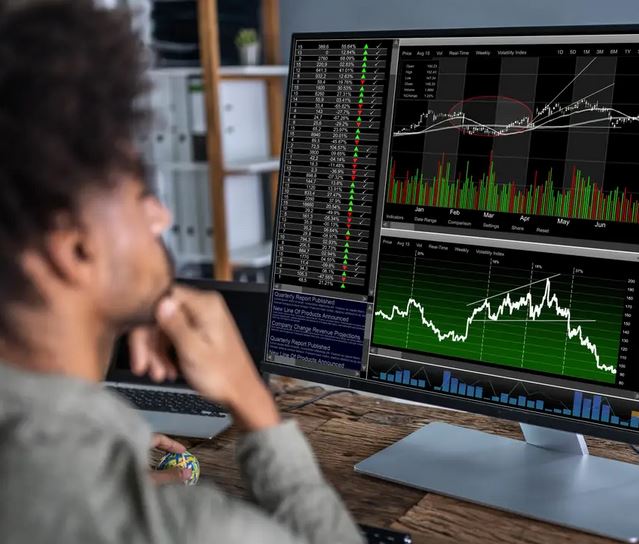Foreign exchange markets (forex) are among the world’s most accessible day trading markets because of their low entry barriers. Starting day trading shouldn’t be difficult if you have a computer, an internet connection, and a few hundred dollars.
A quick profit can’t be expected from this easy entry, however. These four common mistakes, the main reasons new forex day traders fail, should be avoided before you start trading.

1. If you keep losing, don’t keep trading
Keeping an eye on your win rate and risk-reward ratio are the two most important trading statistics.
Win rate measures how many trades you win expressed as a percentage. The win rate of a trader who wins 60 trades out of 100 is 60%. Day traders need to maintain a win rate above 50%.
A reward-risk ratio measures how much you win compared to how much you lose in an average trade. Suppose you lose $50 on average and win $75. In this case, your reward-risk ratio is 1.5, meaning you’re losing as much as you’re winning. A ratio of 1 means you’re losing as much as you’re winning.
If you are a day trader, you should try to maintain a reward risk above 1.25. You can still be profitable even with lower win rates and higher reward risks. The reward-to-risk ratio should be greater than 1.25, and you should develop strategies that succeed more than 50% of the time.
2. Adding to a losing day trade
In the mistaken belief that the trend will reverse, averaging down takes you from where you purchased the trade to where you now hold it as the price moves against you. To avoid losing a trade, you should never add to it. Losses become exponentially larger when the price moves against you for a longer period than expected.
Consider taking a trade with the correct position size and setting a stop-loss. By closing at a smaller loss than it would have been if the price had not reached the stop-loss, the trade would have suffered a greater loss. It makes no sense to risk more than that.
3. Risking more than you can afford to lose
To develop a successful risk management strategy, it is necessary to determine how much of your capital is willing to be risked on each trade. The ideal risk per trade for day traders should not exceed 1% of their capital. Stop-loss orders close out trades when they lose more than 1% of trading capital.
You will only lose a small amount of capital even if you lose several trades at once. On the other hand, if you make over 1% on each winning trade, your losses will be recouped.
In addition to controlling daily losses, risk management includes managing the overall risk. Taking even a small risk per trade could lead to a substantial loss of capital in a short period.
To determine how much you are willing to lose in a day, you should determine what percentage you are willing to lose. The discipline to stop at a 3% daily loss should be established if you can afford it. It is possible for day trading to become an addiction if you allow it to. You should only play with the money you have set aside and follow your strategy as much as possible.
4. Going all in (trying to win it all back)
You will occasionally be tempted to ignore your risk management strategy and make a much larger trade than you would normally make. Various reasons may motivate fate, and you could do more harm than good.
When you experience multiple losing trades, you might want to recover some of those losses. Feeling like you cannot lose when you are on a winning streak is possible. In every trade, there will be one that promises such high returns that you are willing to risk almost everything on it.
When you take on too much risk, you will make a mistake that compounds over time. The use of stop-loss orders has been known to be employed by traders hoping for a turnaround in the market. Many people also believe that if they keep their margin, their situation will turn around, and they will win big.
Feel free to stick to the 1% per trade rule and the 3% per day rule when this happens. Keep your risk management strategy in mind and resist the temptation of increasing your position.

Bottom line
Everything that needs to be planned and executed requires patience, skill, and discipline. Taking a step back as you get deeper into day trading can help you adjust your plan as time goes on. Adapting your financial and personal situations at different times will be beneficial as your financial and personal circumstances change. You should, however, keep these four precautionary measures in mind as you develop your skills and plans.


